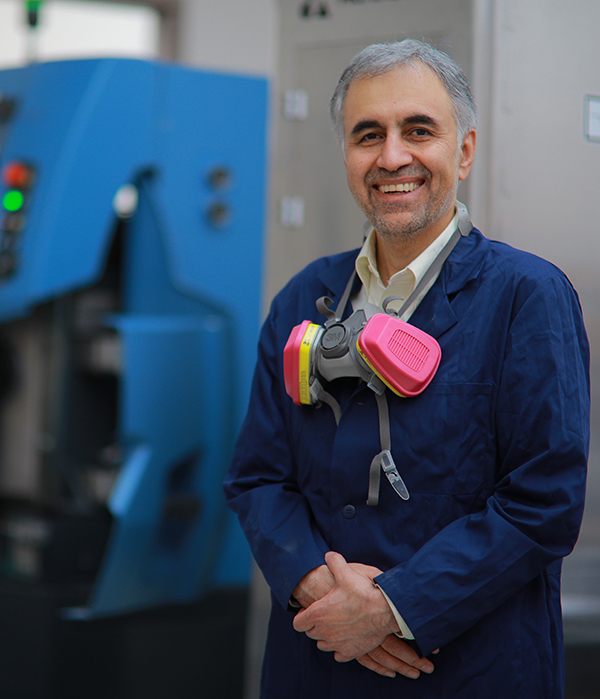UToledo faculty break new ground in research, attract project funds
University of Toledo researchers Dr. Bina Joe, Dr. Mike Weintraub and Dr. Mohammad Elahinia are among the many UToledo faculty members who are experimenting, testing and contributing new technologies, therapies, scholarship and creativity to improve the human condition.
In January, we highlighted the soil ecology research of Dr. Michael Weintraub and last month we featured the gut microbiota and hypertension research of Dr. Bina Joe, director of the Center for Hypertension and Precision Medicine. This month we are featuring, Dr. Mohammad Elahinia’s research on shape memory alloys. (To read about research funding, click here.)
Dr. Elahinia develops three companies for new medical devices

Dr. Mohammad Elahinia, professor and chair of Mechanical, Industrial and Manufacturing Engineering, and director of the Dynamic and Smart Systems Laboratory, poses in one of the labs in Nitschke Hall.
Through reading and research on the known properties of nitinol, a shape memory alloy composed of nickel and titanium, Dr. Mohammad Elahinia furthered his curiosity about the alloy by taking an interdisciplinary approach to developing biomedical devices for use in medical procedures and treatments. Collaborating with multiple UToledo colleagues, including Dr. Christopher Cooper, executive vice president for clinical affairs and dean of the College of Medicine and Life Sciences, Elahinia formed three companies that manufacture the devices.
Elahinia, professor and chair of Mechanical, Industrial and Manufacturing Engineering, and director of the Dynamic and Smart Systems Laboratory at UToledo, has received more than $13 million over the past 15 years for his research projects. “I started three companies with the primary purpose of developing commercialization of some of the ideas my colleagues and I have come up with here at The University of Toledo,” says Elahinia.

Dr. Mohammad Elahinia, professor and chair of Mechanical, Industrial and Manufacturing Engineering, and director of the Dynamic and Smart Systems Laboratory, in Nitschke Hall, home to the College of Engineering.
Working with the Launchpad Incubation program at the University, Elahinia went through the National Science Foundation’s Innovation Corps program for each of the three companies: Retractor, Thermomorph and Regenfix. Retractor promotes a device that improves radiation treatment for pelvic cancers such as those of the prostate and uterus. Thermomorph commercializes the Quick-Flow PE device for non-invasive removal of blood clots. A jawbone reconstruction device is the product of Regenfix.
NSF’s Innovation Corps program allowed Elahinia to validate the ideas through a large pool of potential users and customers. “When you work on an idea for a while, you, in a way, fall in love with it. So, that’s a good practice to talk to others to see if they see a similar need,” he says.
Elahinia points out that so much more than technical expertise is required to succeed. “In an ideal world, you go to somebody and they know a problem that exists and immediately you begin working on a solution,” he says. “And that does happen, but a lot of times, it’s the result of patience needed for building a working team. What can happen if there’s no relationship-building, then there’s no real sense of urgency, real passion or real commitment to make something happen.”
Elahinia says that while so far none of his three companies have had any major economic returns, money has never been the motivation to build medical devices. It goes back to the University’s mission to improve the human condition.
“The most exciting aspect of it for me is the prospect of making a difference. When doing research, you learn that there are these overwhelming statistics about humans and disease, so if you can make their lives a little bit easier, or their healing a little bit faster or less complicated, less painful, that’s exciting for me,” says Elahinia.
“It’s a result of creativity reaching a level of fruition that is hopefully affecting a large population of people. That’s the exciting part.”